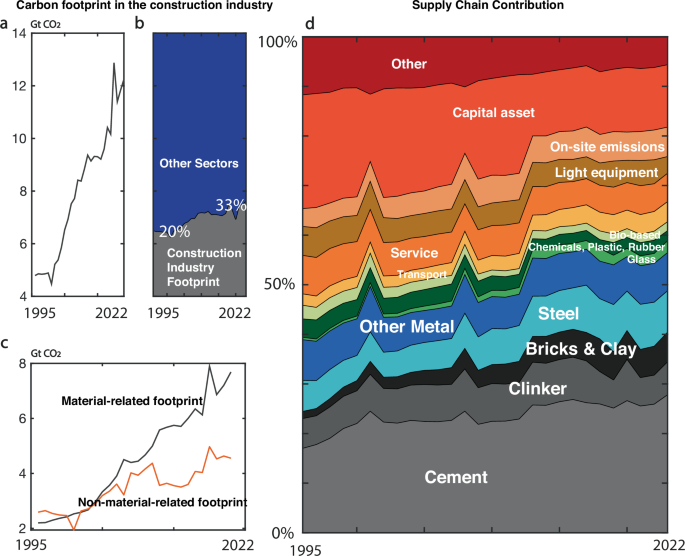- Tiny Farm Friends
- Posts
- Construction Carbon Footprint to double by 2050
Construction Carbon Footprint to double by 2050
Tiny Insights for building naturally, building beautifully.

No.113 — Read old posts on Tinyfarmlab.com
Reading Time 5 minutes
Carbon footprint of the construction sector
is set to double by 2050.
Not because we are building carelessly…
but because we are building more.
A lot more.
And most of this new building will happen
in the Global South.
India.
Africa.
Southeast Asia.
Latin America.
Places that are growing,
urbanising,
shifting,
dreaming.
Almost 60% of the buildings
the world will need by the end of the century…
are still unbuilt.
Let that sink in.
We have not even started constructing
the majority of our future world.
Read that again.
Which means the real question
is not how much we build…
but what materials we choose to build with.
The recent Nature study makes this painfully clear.
If we continue with cement,
steel
and fired brick as our primary materials,
the construction sector alone
will eat up the remaining carbon budget.
We will build homes.
And in the process,
we may lose the climate we build them for.
And here’s the thing:
this isn’t happening somewhere far away…
this is happening in the very places
where people need homes the most.
Affordable homes.
Climate-resilient homes.
Homes that don’t burn a hole in their pocket
or in the planet.
We need a material revolution.
Not someday.
Not when technology catches up.
Now.
That revolution will not come
from a single genius product.
It will come from millions of small decisions:
choosing mud over cement,
lime over acrylic,
straw over insulation foam,
local hands over imported “expertise.”
It will come from people rediscovering
their own capability to build.
To shape shelter.
To shape clay.
To shape their lives.
This is why natural building matters.
Not because it looks earthy.
Not because it photographs well.
Not even because it feels poetic.
But because it is:
Low carbon.
Repairable.
Biodegradable.
Human-scale.
Community-scale.
Future-proof.
And the beautiful part?
Anyone can start.
Right now.
With the smallest choice.
A natural plaster.
An earthen floor.
A cob bench.
A workshop.
A reclaimed piece of wood.
A single weekend learning
how to build with your hands.
The tiniest shift in material literacy
creates the biggest shift in mindset.
And that mindset…
is what will build the next century.
We believe the Global South is not behind.
It is ahead.
Because we still have living traditions.
We still have craftspeople.
We still have mud.
We still have bamboo.
We still have agricultural by-products.
We still have the memory of building with place,
not against it.
If there is a material revolution coming,
it will begin here.
Quietly.
Locally.
With people who refuse
to believe that the only way to build
is the way the world has been building for the last 100 years.
We are all standing at a crossroads.
Two futures:
One made of concrete.
One made of earth.
One filled with extraction.
One filled with regeneration.
One that doubles carbon.
One that doubles life.
The world will build.
That is inevitable.
But how we build
is still completely in our hands.
And maybe, just maybe,
the revolution begins with yours.
Love and light,
Raghav and Ansh
P.S.: If you are on LinkedIn, let’s connect!
What you can watch - Concrete: A Ticking Time Bomb. Can We Fix It?
What you can listen to - HENN Akademie „Reconstructing the Future. Cities as Carbon Sinks“
What You Can Read - Carbon footprint of the construction sector is projected to double by 2050 globally
If you found value in this newsletter, please consider sharing it with a friend.
Tiny Farm Friends Newsletter.
Every Sunday, we share tiny valuable lessons to help you transition to the countryside and build naturally.
